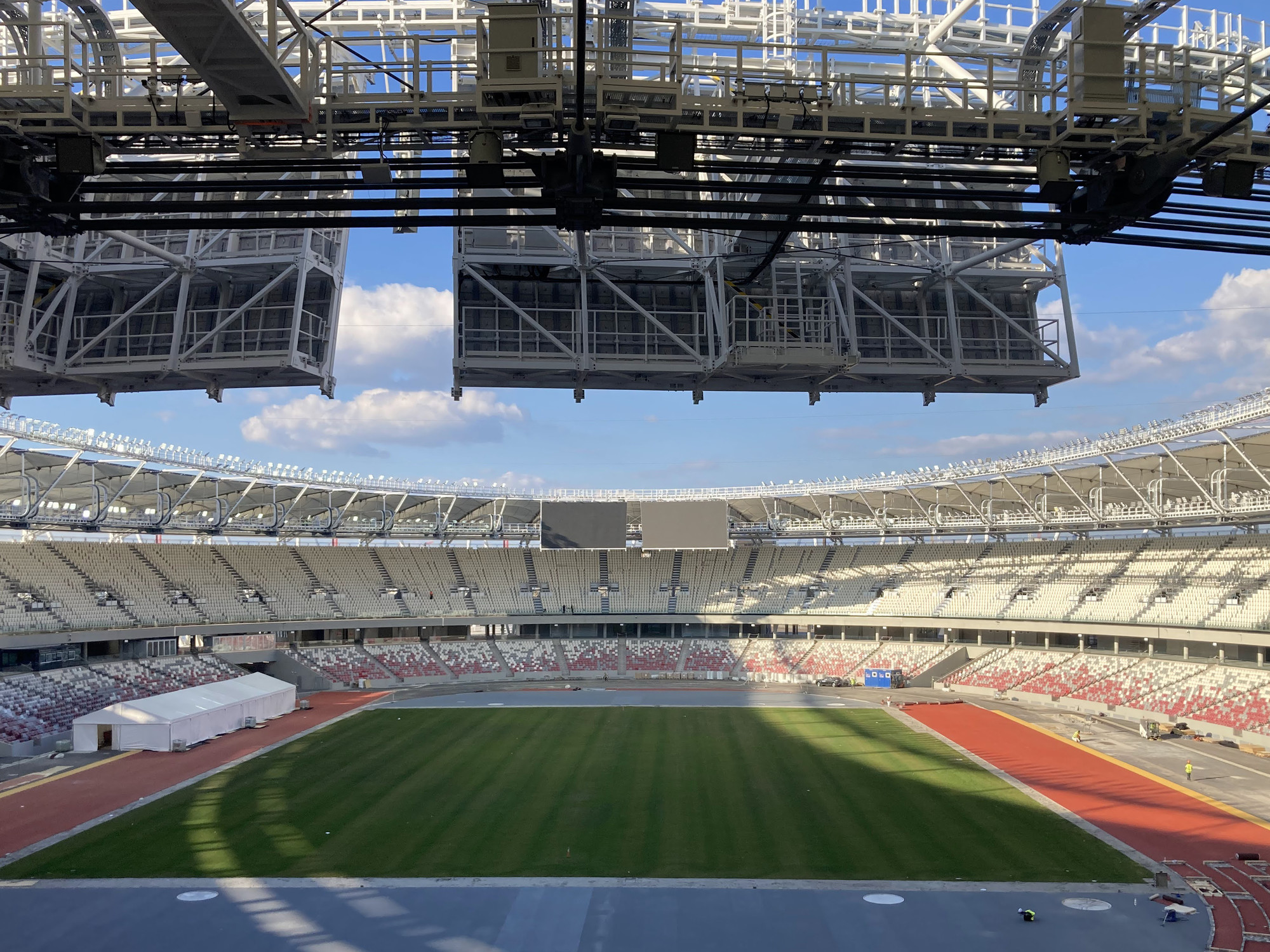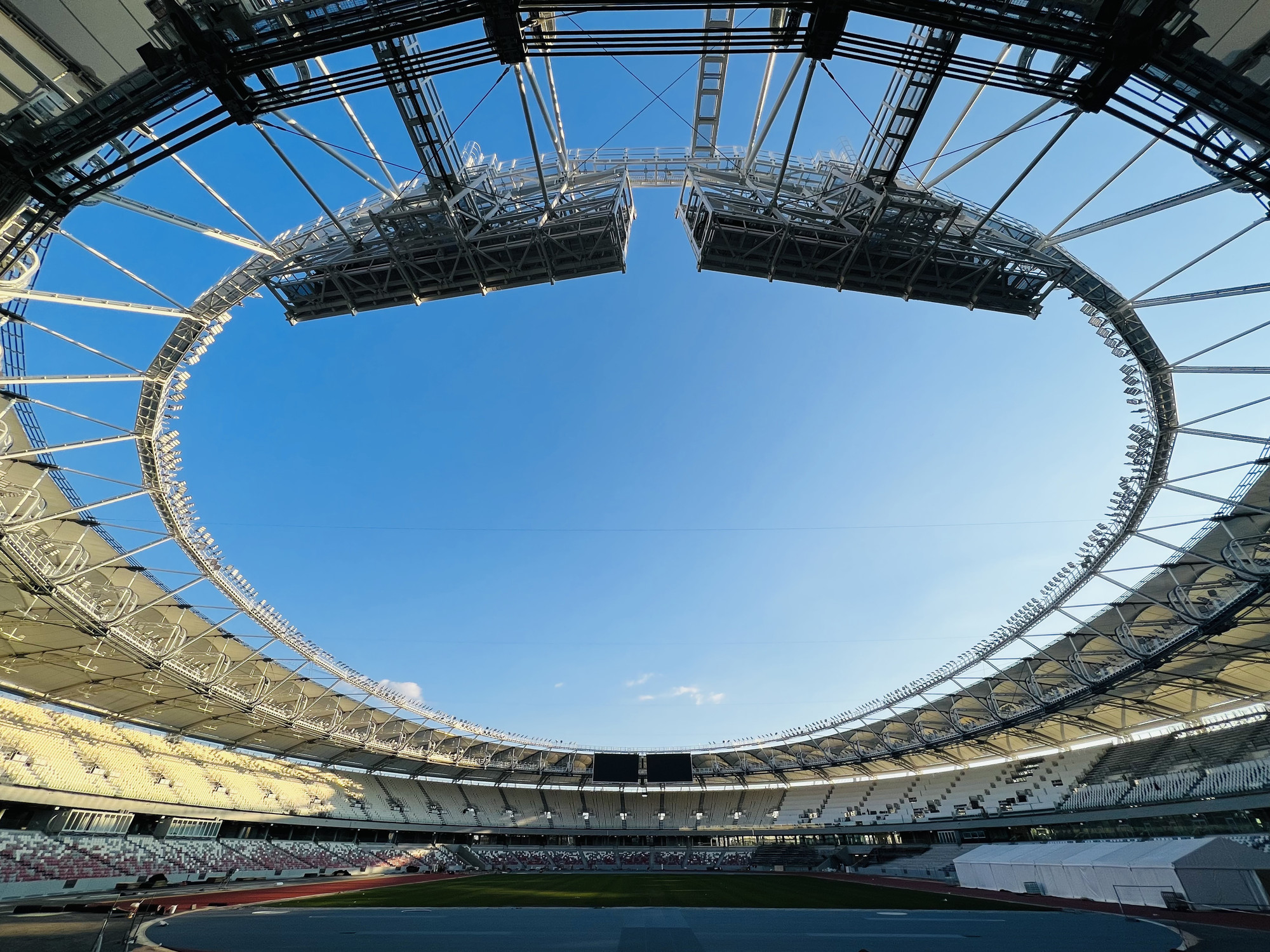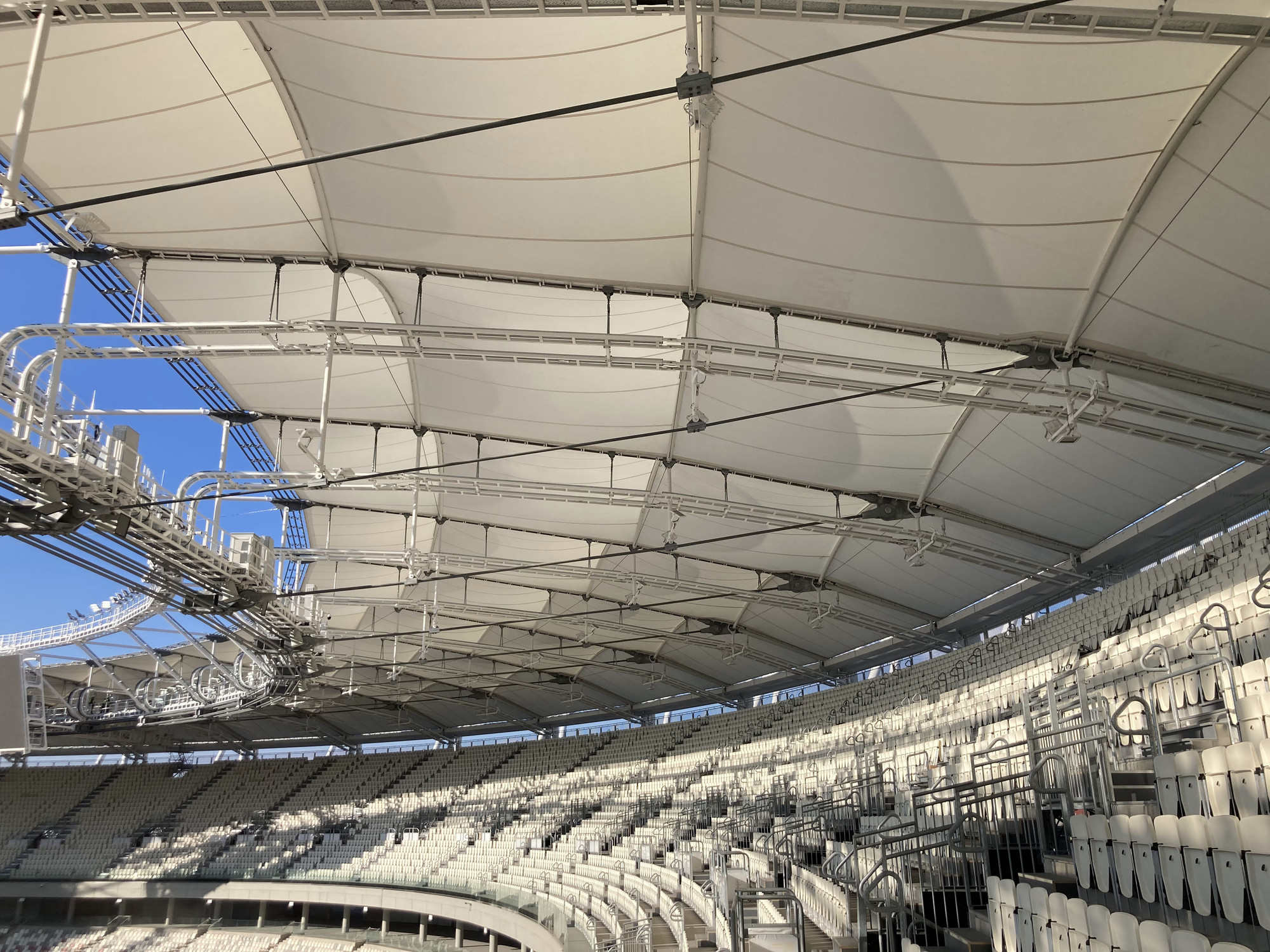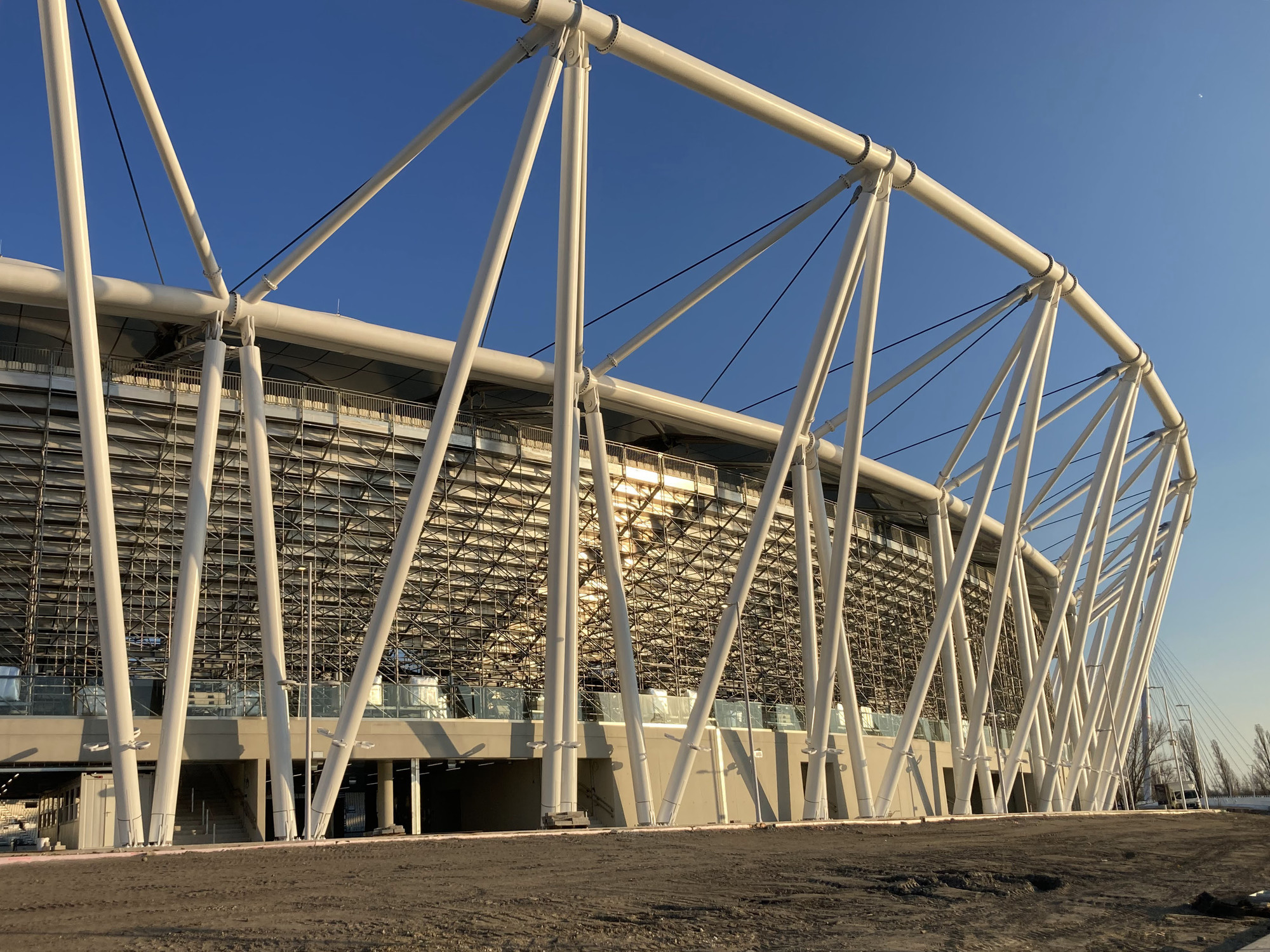The athletics stadium in Budapest was built for the IAAF World Championships in 2023. The aim of the new construction was to make the stadium a permanent athletics venue for Budapest. For the World Championships, the stadium offers 40,000 seats. Of these, 25,000 are in a temporary upper tier that will be dismantled after the event. However, the roof was to be retained, and the podium supporting the temporary stand was to be converted into a covered public space after dismantling.
The roof consists of a load-bearing structure based on the spoke wheel principle of compression and tension rings. The pre-stressed cable net between the tension and compression rings consists of upper and lower radial cables, which are formed into a convex shape by struts. On the inside, the radial cables are connected to the tension rings via welded ring cable nodes. As a special feature, the system line of the lower radial cable crosses that of the upper one near the compression rings, where it also fans out in a V-shape. A welded node detail was developed for this purpose, from which the two fanned-out radial cables run to the upper compression ring. In addition, a compression strut connects the crossing node with the lower compression ring.
The two outer compression rings are arranged in an inclined plane and connected by diagonals to form a truss. Loads are transferred from the compression rings to the concrete substructure via paired A-shaped columns. The roof is covered with a PTFE glass fibre membrane on steel arches and protects the spectators from all weather conditions.





